-
Product Name
ZO-1 antibody
- Documents
-
Description
ZO-1 Rabbit Polyclonal antibody. Positive IP detected in HEK-293 cells. Positive WB detected in HepG2 cells, A431 cells, COLO 320 cells, HEK-293 cells. Positive FC detected in MCF-7 cells. Positive IF detected in MDCK cells, HUVEC cells. Positive IHC detected in human kidney tissue. Observed molecular weight by Western-blot: 230 kDa
-
Tested applications
ELISA, WB, IHC, FC, IP, IF
-
Species reactivity
Human, Dog, Mouse, Rat; other species not tested.
-
Alternative names
Tight junction protein 1 antibody; Tight junction protein ZO 1 antibody; TJP1 antibody; ZO 1 antibody; ZO1 antibody; ZO-1 antibody; Zona OCcludens protein 1 antibody; Zonula OCcludens protein 1 antibody
- Immunogen
-
Isotype
Rabbit IgG
-
Preparation
This antibody was obtained by immunization of ZO-1 recombinant protein (Accession Number: NM_003257). Purification method: Antigen affinity purified.
-
Clonality
Polyclonal
-
Formulation
PBS with 0.02% sodium azide and 50% glycerol pH 7.3.
-
Storage instructions
Store at -20℃. DO NOT ALIQUOT
-
Applications
Recommended Dilution:
WB: 1:200-1:2000
IP: 1:200-1:2000
IHC: 1:20-1:200
IF: 1:20-1:200
-
Validations
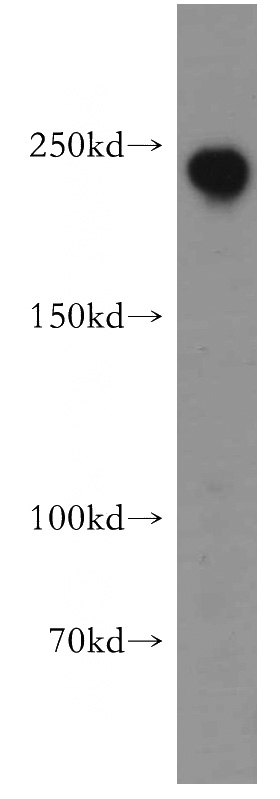
HepG2 cells were subjected to SDS PAGE followed by western blot with Catalog No:117259(ZO1 antibody) at dilution of 1:500
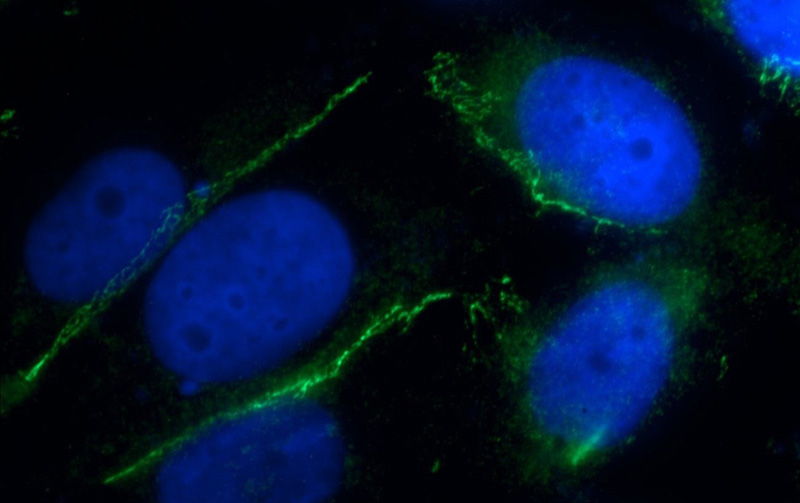
Immunofluorescent analysis of HUVEC cells using Catalog No:117259(ZO1 Antibody) at dilution of 1:50 and Alexa Fluor 488-congugated AffiniPure Goat Anti-Rabbit IgG(H+L)
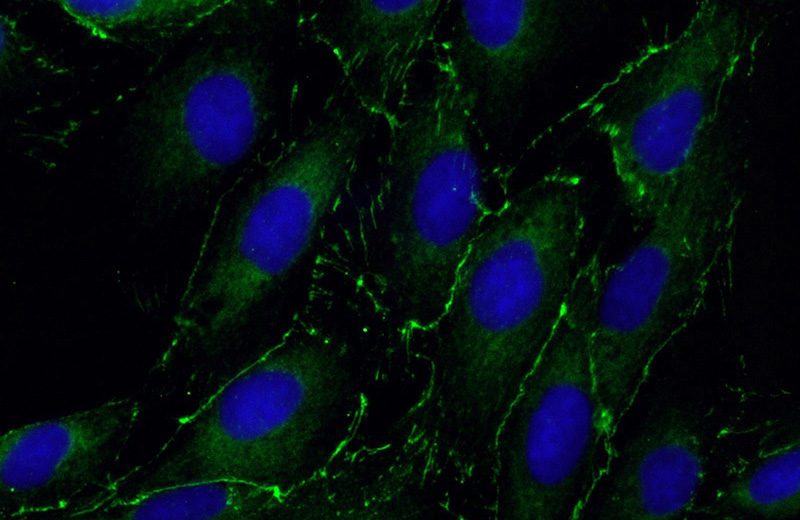
Immunofluorescent analysis of (-20oc Ethanol) fixed MDCK cells using Catalog No:117259(ZO1 Antibody) at dilution of 1:50 and Alexa Fluor 488-congugated AffiniPure Goat Anti-Rabbit IgG(H+L)
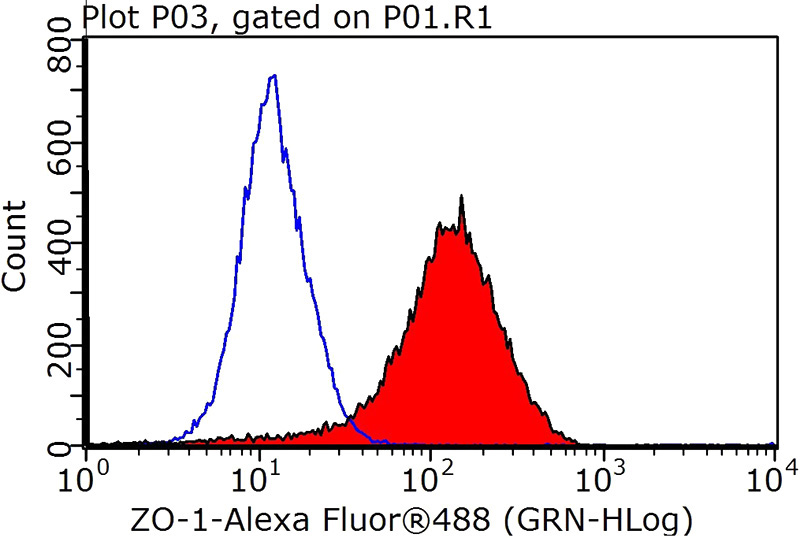
1X10^6 MCF-7 cells were stained with 0.2ug ZO1 antibody (Catalog No:117259, red) and control antibody (blue). Fixed with 90% MeOH blocked with 3% BSA (30 min). Alexa Fluor 488-congugated AffiniPure Goat Anti-Rabbit IgG(H+L) with dilution 1:1000.
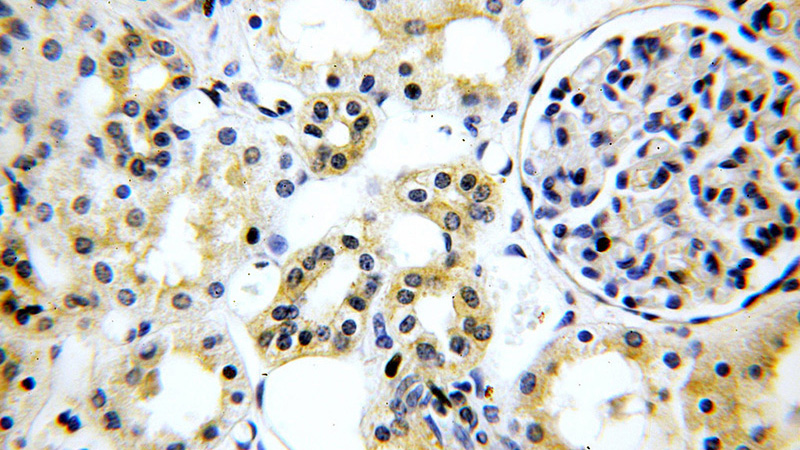
Immunohistochemical of paraffin-embedded human kidney using Catalog No:117259(ZO1 antibody) at dilution of 1:100 (under 40x lens)
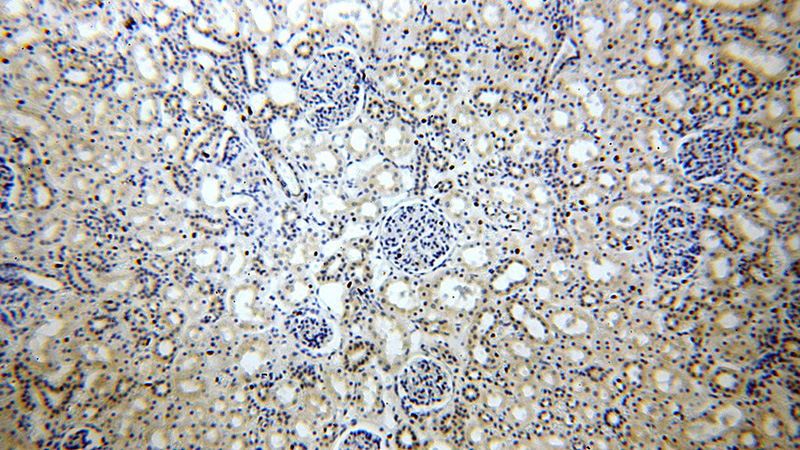
Immunohistochemical of paraffin-embedded human kidney using Catalog No:117259(ZO1 antibody) at dilution of 1:100 (under 10x lens)
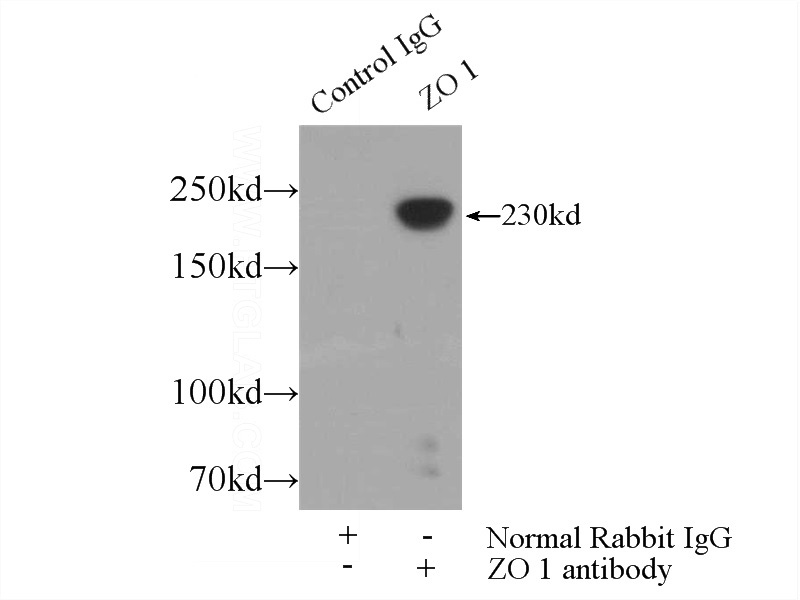
IP Result of anti-ZO1 (IP:Catalog No:117259, 5ug; Detection:Catalog No:117259 1:800) with HEK-293 cells lysate 1800ug.
-
Background
Tight junction (or zonula occludens) form the continuous intercellular barrier between epithelial and endothelial cells, which is required to separate tissue spaces and regulate selective movement of solutes across the epithelium and endothelium (PMID: 20066090). ZO-1 (also known as TJP1) is a peripheral membrane phosphoprotein located on the cytoplasmic face and is expressed in tight junctions of both epithelial and endothelial cells (PMID: 3528172). It binds the transmembrane proteins occludin and the claudins linking them to cytoskeletal actin (PMID: 17418867). ZO-1 belongs to a family of multidomain proteins known as the membrane-associated guanylate kinase homologs (MAGUKs). It is a pivotal tight junction protein and may be involved in signalling mechanisms regulating cell proliferation and differentiation (PMID: 22782886).
-
References
- Eilert-Olsen M, Haj-Yasein NN, Vindedal GF. Deletion of aquaporin-4 changes the perivascular glial protein scaffold without disrupting the brain endothelial barrier. Glia. 60(3):432-40. 2012.
- Ning Q, Liu C, Hou L. Vascular endothelial growth factor receptor-1 activation promotes migration and invasion of breast cancer cells through epithelial-mesenchymal transition. PloS one. 8(6):e65217. 2013.
- Cai Y, Wang W, Liang H, Sun L, Teitelbaum DH, Yang H. Keratinocyte growth factor pretreatment prevents radiation-induced intestinal damage in a mouse model. Scandinavian journal of gastroenterology. 48(4):419-26. 2013.
- Cai Y, Wang W, Liang H, Sun L, Teitelbaum DH, Yang H. Keratinocyte growth factor improves epithelial structure and function in a mouse model of intestinal ischemia/reperfusion. PloS one. 7(9):e44772. 2012.
- Juric M, Xiao F, Amasheh S. Increased epithelial permeability is the primary cause for bicarbonate loss in inflamed murine colon. Inflammatory bowel diseases. 19(5):904-11. 2013.
- Miao L, Xiong X, Lin Y. miR-203 inhibits tumor cell migration and invasion via caveolin-1 in pancreatic cancer cells. Oncology letters. 7(3):658-662. 2014.
- Yang F, Wang Z, Wei X. NLRP3 deficiency ameliorates neurovascular damage in experimental ischemic stroke. Journal of cerebral blood flow and metabolism : official journal of the International Society of Cerebral Blood Flow and Metabolism. 34(4):660-7. 2014.
- Zhou Y, Zhang Y, Zou H. The multi-targeted tyrosine kinase inhibitor vandetanib plays a bifunctional role in non-small cell lung cancer cells. Scientific reports. 5:8629. 2015.
Related Products / Services
Please note: All products are "FOR RESEARCH USE ONLY AND ARE NOT INTENDED FOR DIAGNOSTIC OR THERAPEUTIC USE"
